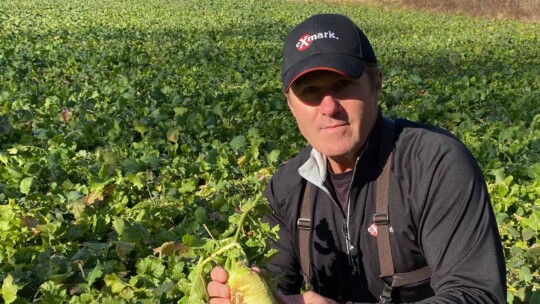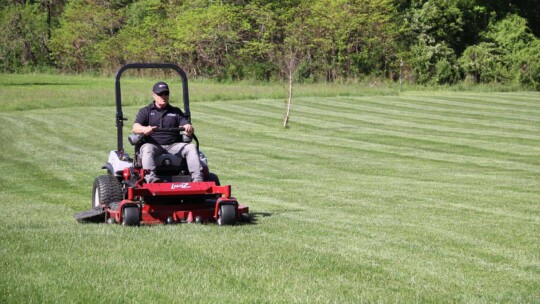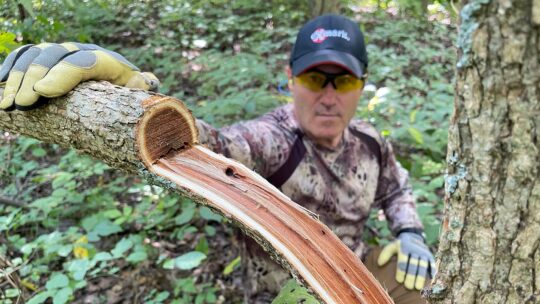There are three things legendary outdoorsman Joe Thomas can usually be found doing: big-game hunting, filming a Reel in the Outdoors episode, or tending to his southern Ohio farm. In this Backyard Life video, the Super Slam award recipient’s doing the latter. Specifically, showing viewers how he frost seeds his clover food plots in mid-January. It’s a technique that helps produce a cover crop staple Thomas has relied on to draw trophy bucks onto his home turf for as long as he can remember.
Before demonstrating how to frost seed, Thomas points out the important role food plots play in enhancing rural properties and farms, namely their ability to help increase wildlife populations. And, that his hands-down favorite variety to plant is white clover—a perennial food source whitetail deer absolutely love. To ensure it remains healthy, Thomas applies fertilizer intermittently, and cuts it with his Exmark zero-turn three to four times a year.
Thomas explains that late winter is the best time for frost—or, snow—seeding. This is because the ground tends to freeze and thaw rapidly—tightening then loosening when days of cold temps are followed by warm snaps. He notes the best time to frost seed, regardless of where you live, is late December to March. Typically, 45 days prior to seeing seed or grass growth is best, Thomas continues.
Frost Seeding Supplies
Thankfully, frost seeding is a pretty straightforward process. Here’s all the supplies Thomas says you’ll need:
- Simple, inexpensive hand-operated rotary seed spreader
- One bag of clover blend (mix of white and red clover)
- One bag of clay-based cat litter* (mix 1:1 with clover blend)
*Note: Cat litter doesn’t aid germination; rather, it simply helps visually assess how the small clover seeds are being spread.
Steps to Apply The Seeds
Once you have the supplies assembled, it’s time to get to work! Thomas says to adjust the seed spreader to a very small opening, and slowly start walking the perimeter of the food plot. After you make your way around, start working back and forth across the plot, maintaining your same pace.
Once completed, all there’s left to do is wait for the seeds to germinate—and for the whitetail to begin feeding on them!



